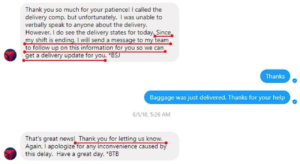How to Maximize Lead Generation via Facebook Posts and Ads
With billions of people using Facebook each month, the opportunity for lead generation is endless. Facebook recently shared tips on how to maximize lead generation via Facebook posts and ads to help businesses boost the performance of their Facebook marketing efforts. These tips cover the four critical elements of effective lead generation, intending to help marketers formulate a better strategy for reaching and connecting with potential customers.
1. Lead Capture
According to Facebook, one of the keys to capturing leads is ensuring that your audience clearly understands what they’re signing up for. They should also clearly understand what makes your product or service worthy of giving their personal email address or other information. Being upfront and having clear communication from the get-go helps ensure that those that are converting are a part of your target audience.
2. Lead Magnets
Facebook’s second tip is that brands should adopt the “give before asking” mentality by offering users something in return for their information. This could be a one-sheeter, eBook, discount code, free trial, newsletter, webinar, etc. By providing value upfront you establish trust and a connection with your audience, leading to a better relationship and more brand-loyalty in the future.
3. Landing Page
Landing pages are a critical element to ads. It’s important that once you get a user to click through your post or ad, that your landing page matches what you’ve explained. It’s also important that it has a quality design and effectively collects the information you need. Facebook advises brands to test different versions of landing pages to see which have the high click-through and conversion rates. They also suggest that you should consider setting up a custom audience to then retarget those who have clicked through, but not yet converted.
4. Lead Scoring
Facebook’s final tip is to create a lead scoring matrix in order to better customize their outreach efforts and prioritize leads based on past engagement. For example, downloading a white paper is worth more points than unsubscribing from your email list. This can help you save time and effort by only contacting the leads that are more likely to convert first. The way you go about establishing your lead scoring table will vary, depending on your offer and goals. But the idea is that by segmenting each of your leads will allow you to better focus the outreach for each of your strategies.
Final Thoughts
Lead generation is key to maximizing your Facebook marketing efforts. The more insights you can gather, the better you can hone in on where the right people are for every campaign. Either by focusing on groups directly or using them for Lookalike’s to expand your research. At Onimod Global, we’re experts in digital marketing, specializing in Facebook Ads. If you need additional assistance in the Facebook ad space, or any area of digital marketing, we can help. At Onimod Global we’re experts in all areas of social media and digital marketing. Learn more about who we are and what we do, and contact us here today.
We also release the latest digital marketing news and essential marketing tips every Tuesday and Thursday! To catch up on the top digital marketing news and trends, click here.



